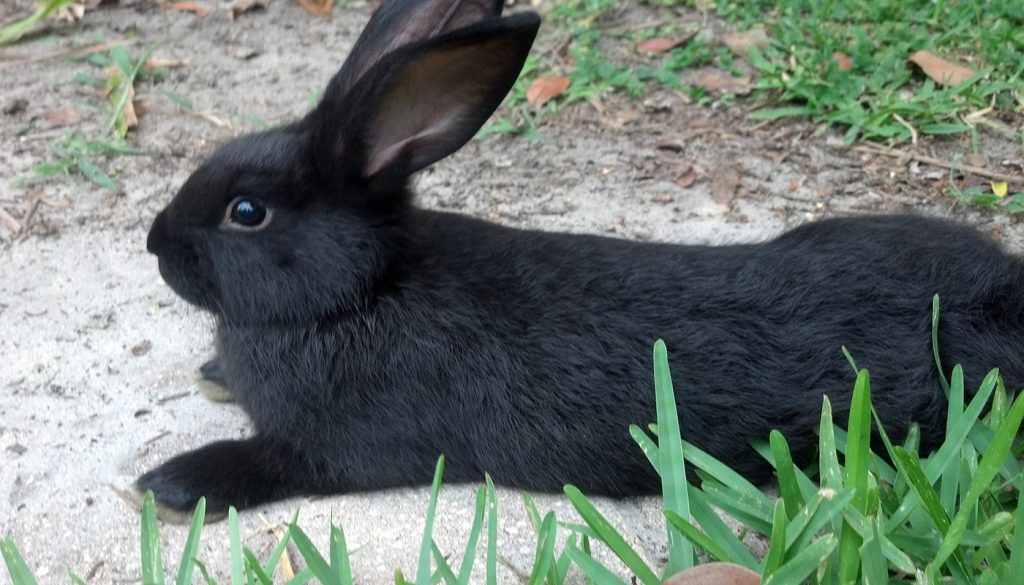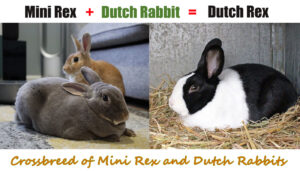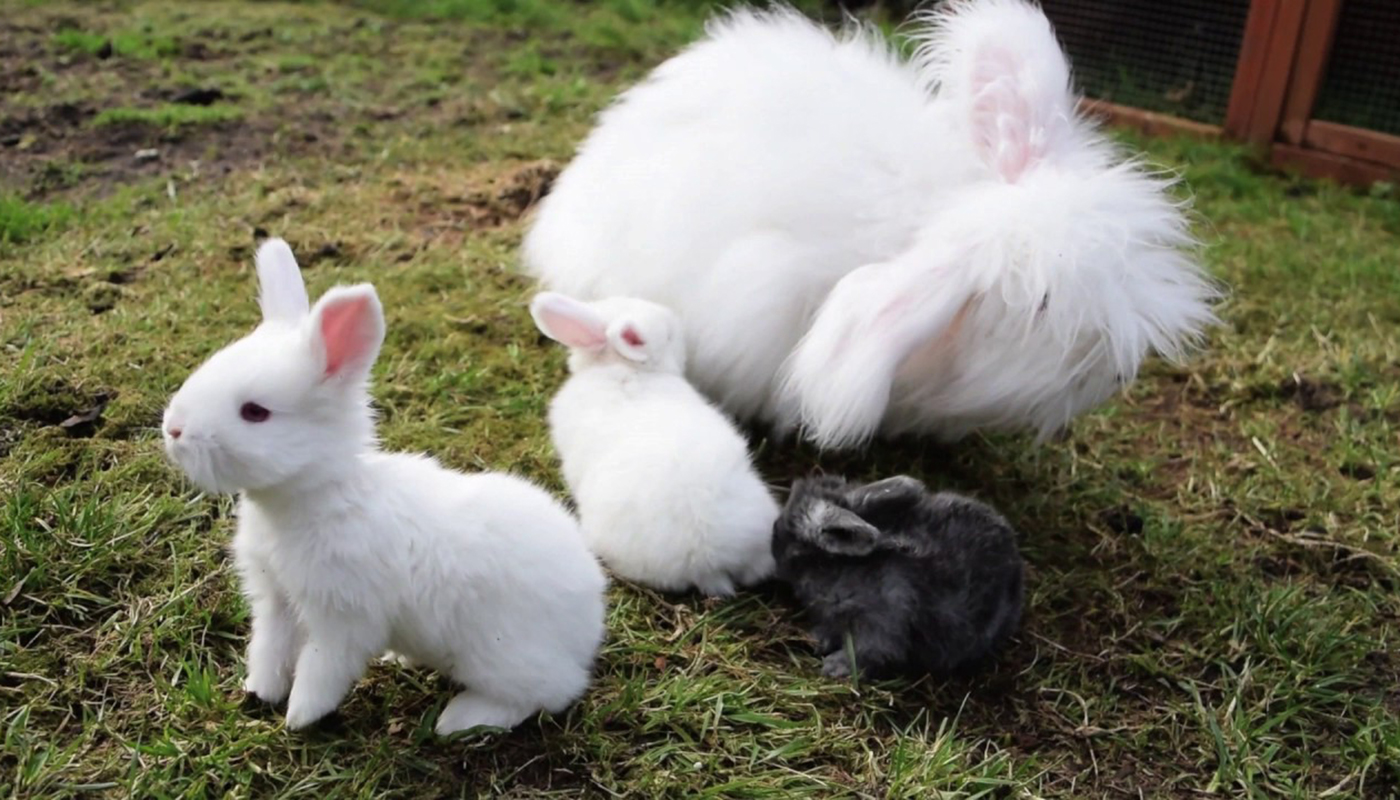
The Flemish Giant rabbit breed is considered to be the largest of all rabbit breeds. They truly are giant rabbits that were initially bred as a utility breed for their meat and fur.
They are sought after as pets because of their gentle and patient nature especially when being handled which makes them an excellent choice for families with children.
They are also quite easy to train and tend to like the company of their humans.
BREED PROFILE OVERVIEW
|
|
|---|---|
| Breed Name: | Flemish Giant |
| Other Names: | None |
| Country of Origin: | Belgium |
| Breed Purpose: | Exhibition and, pets |
| Breed Size: | Large/giant |
| Breed Weight: |
Female/Doe: 14 lbs. Male/Buck: 13 lbs. |
| Breed Color(s): |
Seven different colors which are: Black, Blue, Fawn, Sandy, Light Gray, Steel Gray, and White |
| Physical Appearance: |
They have long powerful bodies with broad hindquarters, their bodies have a long mandolin type shape.
The bucks have a large broad head and the does head is smaller and more feminine. The does also usually have a fat dewlap. They have dense, glossy, rollback type fur that is soft to the touch and does not require any extra care or grooming. |
| Temperament: | They are friendly, even-tempered and active |
BREED CHARACTERISTICS
- They have a decent sized litter and the females make very good mothers. Most rabbits have good maternal instincts and some breeds can be a bit testy and protective when they have young. They can also be uncharacteristically moody during mating season.
- Their young open their eyes around 7 to 14 days with an average of 10 days after birth. When their eyes have opened, they can start to be introduced to food such as alfa pellets and water.
- Even when the young start to eat it does not mean they are quite ready to be weaned from their mothers. The mothers will know when it is time to wean her young. It is important for the baby rabbit’s health, growth, immune system and development of a proper digestive system that they do not be removed from their mother for at least 8 weeks. They usually require her milk for a minimum of 8 weeks after birth.
- Their average lifespan is 5 to 8 years although there have been some breeds that have lived to 10 years with the proper care.
| Good Pets? | They make good pets for families with children, elderly, novices and singles. They can also be either an indoor or outdoor pet. They do, however, require a bit of extra space due to their size so they are not recommended for apartment-style living. |
| Child Friendly? | Children should be supervised around animals and properly taught how to look after them and handle them. Rabbits can bite and scratch |
| Ideal Climate: | All climates – rabbits should never be left outside without proper shelter and housing that must be raised off the ground and predator safe. |
| Conservation Status: | Not Listed by the *ALC Status/Rarity: They are not listed by the American Livestock Conservancy |
| Recognized by the ARBA? | Yes, the American Rabbit Breeders Association recognizes seven different color varieties which you will find in the breeds color description in this article. |
| Rabbit Associations/Clubs: | National Federation of Flemish Giant Rabbit Breeders |
| Where to buy them? | For information on local breeders go to the National Federation of Flemish Giant Rabbit Breeders website. It has a listed of their registered breeders and contact information for the club. The USA Rabbit Breeders Directory is a useful resource to find breeders, clubs, and information about the breed. |
| Note: *ALC stands for American Livestock Conservancy | |
GENERAL INFORMATION
For a slicker more glossy or shiny pelt, it is advisable to groom them every two to three weeks. During the molting season, it is advisable to groom rabbits every week to remove stray hairs.
Rabbits can be quite lively and energetic and need quite a bit of exercise and stimulation. It is a good idea to have a nice safe and secure run for them to play in and stretch their legs.
Toys, tubes and various obstacle courses for them is a good way to help them expend some of their energy and they are really fun to watch at play.
They are also sociable animals that do like to have a friend or two to play with.
Regular health and critter check once a week or every second week should become a habit. This will help to keep your rabbit(s) in excellent condition and health. Grooming does not require a lot if their coats are low maintenance. But it is a good idea to give them a nice gentle brushing to help remove any excess hairs regardless of the length of their coats.
It is also a good idea to check on the state of their teeth to ensure that they are not too long and causing the rabbit any discomfort.
Rabbits teeth never stop growing and getting fresh hay on a regular basis helps to control the growth of their teeth.
Rabbits need a good diet of quality pellets that are filled with their daily nutritional requirements. They do love dandelions, cabbage and various fruits as a nice tasty treat.
Rabbits that have quite a short coat are not really at risk for most of the digestive problems long fur seem to cause rabbits. They can still get other ailments such as flystrike, ear mites or overgrown teeth. These can all be controlled/maintained or avoided altogether with the proper health and grooming care of the rabbit(s).
If you have two rabbits and do not want to breed them it is possible to spay female rabbits and neuter male rabbits.
The females can be spayed as young as four months old, but vets prefer to wait until they are at least six months old before doing so.
The young males can be neutered as young as found months old.
Rabbits, just like any other pet, should be dewormed on a regular basis. Check with your local vet for proper guidance on the administering of worm medication to your animals.
HISTORY
The Flemish Giant is said to have originated in Flanders and was bred sometime during the early 16th century near the city of Ghent.
The breed is thought to have various meat and fur rabbit mixes in its lineage including those of the Stone Rabbit and the Patagonian breed of rabbit that is now extinct.
The very first standards for the breed were written in 1893 and is the ancestor of many European and other rabbit breeds around today. These breeds include that of the Belgian Hare rabbit breed.
They were first sent to America from Belgium in the 1890s in order for the American to help improve on the quality of the breed.
The National Federation of Flemish Giant Rabbit Breeders was founded in 1915.
This big cuddly rabbit has many nicknames such as the “Gentle Giant” as it is truly gentle in nature and very patient.
Video
USEFUL LINKS
- American Rabbit Breeders Association
- Fur Commission USA
- North American Meat Institute
- American Livestock Conservancy
- Animal Shelter (ASPCA)
- American Veterinary Medical Association
- American Animal Welfare Society
- American Animal Control
- American Society of Animal Science
- United States Department of Agriculture
- United States Department of Agriculture – Rabbit Meat
 Britannia Petite Rabbit – Everything You Need to Know
Britannia Petite Rabbit – Everything You Need to Know Mini Lop Rabbit – Everything You Need to Know
Mini Lop Rabbit – Everything You Need to Know Standard Chinchilla Rabbit – Everything You Need to Know
Standard Chinchilla Rabbit – Everything You Need to Know Introducing the Cinnamon Jersey: The Adorable Hybrid Rabbit
Introducing the Cinnamon Jersey: The Adorable Hybrid Rabbit Florida White Rabbit – Everything You Need to Know
Florida White Rabbit – Everything You Need to Know Discover the Dutch Rex: A Charming Crossbreed of Mini Rex and Dutch Rabbits
Discover the Dutch Rex: A Charming Crossbreed of Mini Rex and Dutch Rabbits English Angora – Everything You Need to Know
English Angora – Everything You Need to Know Discover the Charming Lion Dutch: A Hybrid Rabbit Combining Lionhead x Dutch
Discover the Charming Lion Dutch: A Hybrid Rabbit Combining Lionhead x Dutch 10 Best Meat Rabbit Breeds
10 Best Meat Rabbit Breeds American Sable Rabbit – Everything You Need to Know
American Sable Rabbit – Everything You Need to Know Common Rabbit Health Problems and How to Spot Them Early
Common Rabbit Health Problems and How to Spot Them Early Silver Fox-Satin Rabbits: A Unique Crossbreed
Silver Fox-Satin Rabbits: A Unique Crossbreed